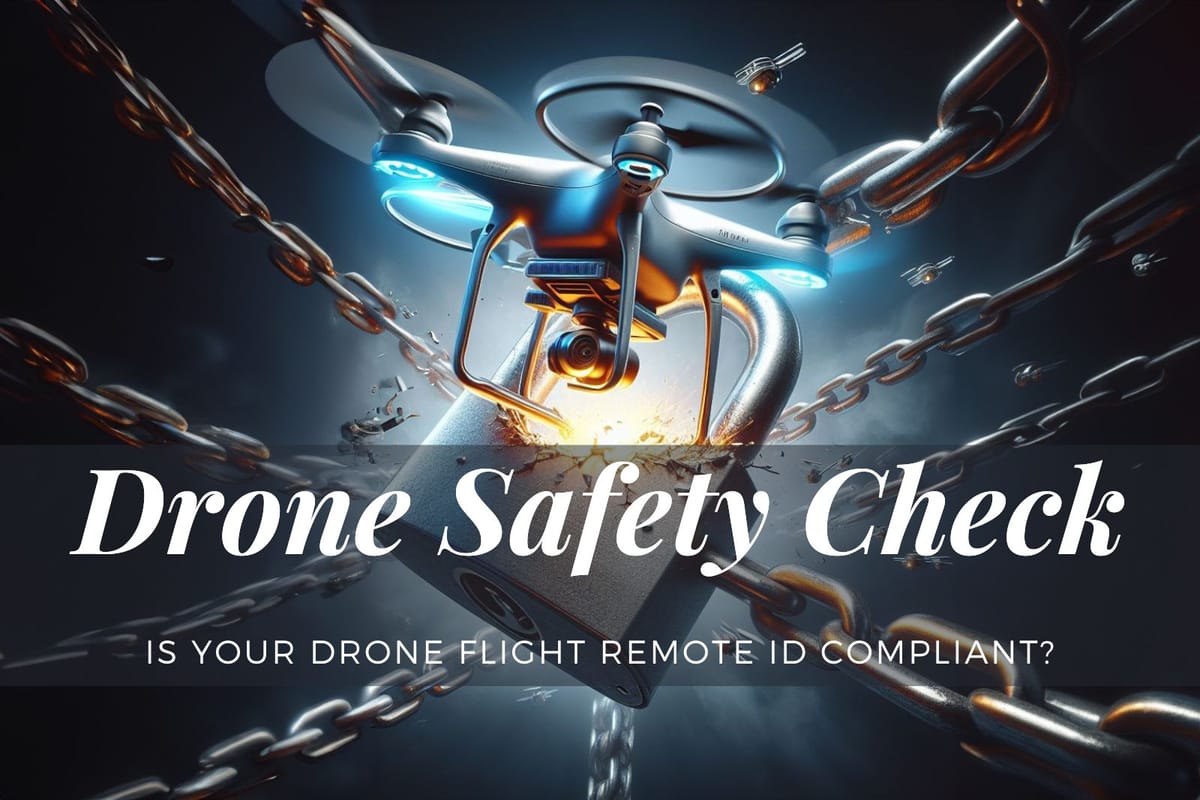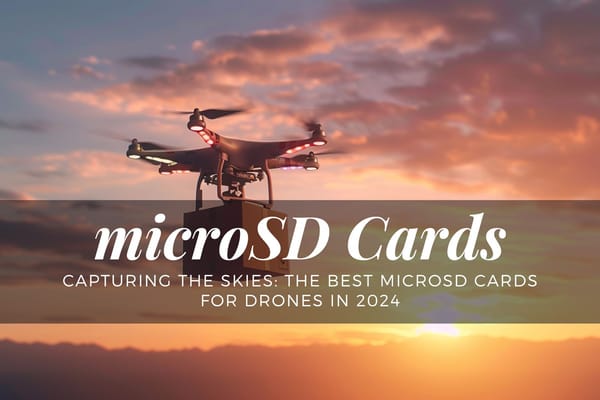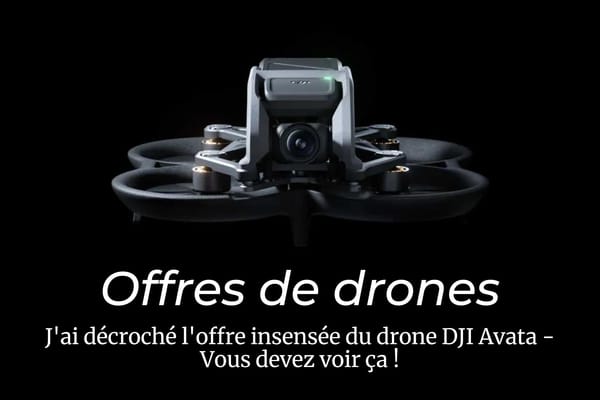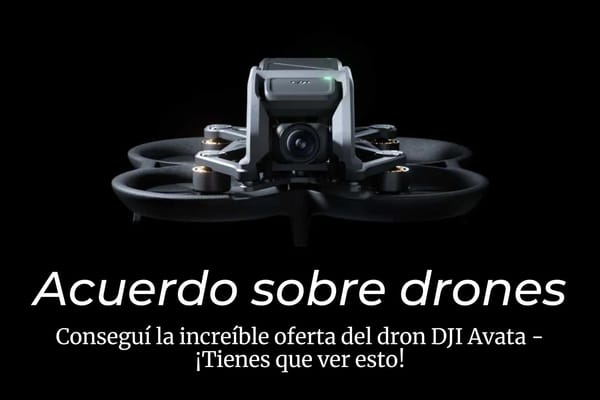Drone Safety Check: Is Your Drone Flight Remote ID Compliant?

Remote ID Compliant
Is Your Drone Flight Remote ID Compliant? If not, you're not alone. With the FAA's new regulations, it's crucial to understand how to navigate this change. Our article dives deep into these rules, offering insights and guidance to ensure your drone flights remain within the law. Stay tuned to learn more about this pivotal shift in drone operations.
Key Takeaways
- The FAA has extended the compliance deadline for the Remote ID rule to March 16, 2024.
- Remote ID is crucial for the safety and security of the National Airspace System (NAS).
- There are three ways to comply with the Remote ID rule: operate a Standard Remote ID drone, use a Remote ID broadcast module, or operate within FAA-Recognized Identification Areas (FRIAs).
- Drones that weigh less than .55 pounds and are flown only for recreational purposes do not have to comply with Remote ID requirements.
- Many modern drones from leading manufacturers such as DJI, Autel, and Skydio are in alignment with the Remote ID requirements.
Understanding Remote ID
What is Remote ID?
Remote ID, short for Remote Identification, is a system that enables the identification and tracking of Uncrewed Aerial Systems (UAS) or drones while they are in flight. It acts like a digital license plate for drones, broadcasting a serial number or session ID unique to each drone while in flight. The drone operator’s identity is obscured, and only authorized individuals from public safety organizations or the FAA can access the pilot’s information.
In layman’s terms, Remote ID is a means of tracking your aircraft and you. It provides information about drones in flight, such as the identity, location, and altitude of the drone and its control station.
Why is Remote ID Important?
As the drone industry continues to advance, there have been increasing calls for more accountability from drone operators. To address concerns over safety and responsibility, the Federal Aviation Administration (FAA) of the United States has introduced Remote ID. This regulation is designed to enhance safety, security, and accountability and will help the commercial industry continue to scale.
Remote ID is one of the essential building blocks for a UAS Traffic Management system (UTM) which would be the main mode for further developing uncrewed air traffic of delivery and transportation vehicles.
Who Needs to Comply with the Remote ID Rule?
All drone pilots who are required to register or have registered their drone must operate in accordance with the Remote ID rule. This includes drones flown for recreation, business, or public safety.
In certain areas designated as FAA-Recognized Identification Areas (FRIAs), traditional Remote ID compliance is not mandatory. However, it's essential for pilots to know which areas are designated as FRIAs and understand the specific rules that apply within them.
The History of Remote ID
The journey towards Remote ID began when the FAA published the Notice of Proposed Rulemaking (NPRM) on Remote Identification of Unmanned Aircraft Systems in December 2019. After receiving extensive feedback from drone enthusiasts and experts – a whopping 53,000 comments – the FAA fine-tuned the rules. The final version was published in January 2021, with an effective date delayed to April 2021 due to necessary corrections.
Complying with Remote ID
How to Comply with Remote ID?
There are three primary ways to comply with the Remote ID rule:
- Operate a Standard Remote ID drone that broadcasts identification and location information of the drone and control station. These drones are produced with built-in Remote ID broadcast capabilities in accordance with the Remote ID rule's requirements.
- Use a Remote ID broadcast module. This is a device that can be added to your drone, enabling it to broadcast identification and location information. It's an effective way to retrofit your existing drones and ensure they meet Remote ID requirements without replacing the entire aircraft.
- Operate within a FAA-Recognized Identification Area (FRIA). These are defined geographic areas where drones can be flown without Remote ID equipment. Both the drone and the pilot must be located within the FRIA's boundaries throughout the operation.
Drones with Built-in Remote ID
Several drone models come with built-in Remote ID capabilities. These include models from popular manufacturers like DJI and Autel Robotics. For instance, DJI models with Remote ID include DJI Mini 4 Pro, DJI Air 3, DJI Mavic 3 Pro, and DJI Mavic Pro Platinum5. Autel Robotics models with Remote ID include Dragonfish Standard, Dragonfish PRO, Dragonfish Lite, EVO lite, EVO II, and EVO lite+2.
Remote ID Broadcast Modules
For drones that do not have built-in Remote ID capabilities, a Remote ID broadcast module can be used. These modules are compact and lightweight add-on devices that enable any drone to achieve compliance with the FAA's Remote ID regulations. One such module is the pingRID, which comes preconfigured right out of the box, requiring you only to assign your unique device ID to your FAA drone registration8.
FAA-Recognized Identification Areas (FRIAs)
FRIAs are defined geographic areas where drones can be flown without Remote ID equipment. Both the drone and the pilot must be located within the FRIA's boundaries throughout the operation. If a drone is equipped with Standard Remote ID, it may not be disabled or shut off while flying in a FRIA. The FAA publishes the locations of approved FRIAs on the FAA’s UAS Data Delivery Service (UDDS) website4.
Compliance Deadline
The FAA had initially set a compliance deadline for Remote ID of September 16, 2023. However, due to limited availability of broadcast modules and lack of approved FAA-Recognized Identification Areas, the FAA extended the deadline to March 16, 2024. The FAA will consider all factors in determining whether to take enforcement action during this period.
The Future of Compliance
In the future, operators of Standard Remote ID drones may have a choice: they can either broadcast their drone’s ID (similar to a serial number) or opt for a Session ID. This Session ID will be uniquely identifiable such that law enforcement and the FAA can track the drone.
Compliance with Remote ID is a pivotal step towards safer and more responsible drone operations. By implementing Remote ID technology, drones can be better identified, and their movements can be tracked, ultimately enhancing airspace security and public safety.
FAQs
- What is the deadline for complying with the Remote ID rule?
The FAA has extended the compliance deadline for the Remote ID rule to March 16, 2024. - What happens if I don't comply with the Remote ID rule?
Failure to comply with the Remote ID rule could result in fines and suspension or revocation of pilot certificates. - Are there any exceptions to the Remote ID rule?
Drones that weigh less than .55 pounds and are flown only for recreational purposes do not have to comply with Remote ID requirements. Also, if you fly ONLY in an FAA-Recognized Identification Area (FRIA), you do not have to comply with Remote ID requirements.
External URLs
- Federal Aviation Administration - Remote Identification of Drones
- Commercial UAV News - FAA Pushes Remote ID Mandate to March 2024
- UAV Coach - FAA's Remote ID Deadline Extended to March 16, 2024


